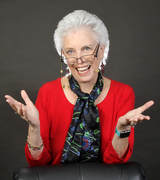 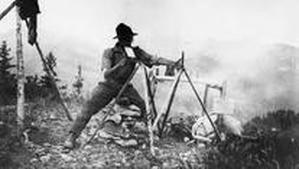 A land surveyor sends a heliograph to his partner more than 100 years ago. He must have been fluent in Morse Code A land surveyor sends a heliograph to his partner more than 100 years ago. He must have been fluent in Morse Code How do you know it’s the holiday season? There are lights everywhere sending that message. But that’s not the only kind of message light can send. A little more than 100 years ago when a telegraph began to become popular, people sent wireless messages called heliographs. They were made of flashes of light in Morse code (the same pattern of short and long as used in telegraphs) by reflecting the sun’s rays with a mirror. When the mirror was at a particular angle to the sun, it reflected a flash of bright light to observer miles away. 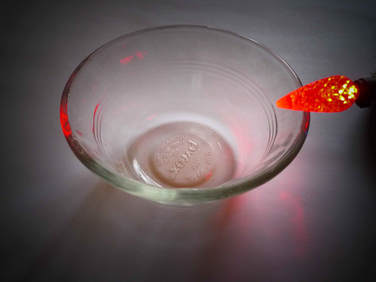 Note where the red light from the bulb emerges on the opposite side. Some internally reflected light is emerging from a ridge in the glass. Photo by Alexandra Siy Note where the red light from the bulb emerges on the opposite side. Some internally reflected light is emerging from a ridge in the glass. Photo by Alexandra Siy Maybe there’s another way to send light. Put a holiday light on one rim of a heavy glass measuring cup or dish. See where the light emerges on the rim on the opposite side. Move the light back and forth and watch what happens on the other side. The light travels down the side, and bends to go across the bottom and up the other side, but if you look at the cup sideways you can’t see the beam. Light stays inside the glass as it travels from rim to rim. Could we make something like a wire from glass that can transmit light? Absolutely! An optical fiber is a flexible, transparent fiber made of glass or plastic that acts as a wire for light. Imagine a beam of light entering a fiber at exactly the right angle to bounce off the inside wall of the fiber where it meets the air. It is then reflected at exactly the same angle to bounce off the opposite wall making a zig-zag path until it reaches the end of the fiber. This internally reflected light stays inside the glass fiber as it travels at the speed of light. HUGE quantities of all kinds of information—words, pictures, music, and videos—can now be sent through optical fibers, much more than through wires. A modern network with copper wiring can handle about 3,000 telephone calls at the same time, while a similar system using fiber optics can carry more than 30,000! So when you hit “send,” know that your holiday message is a blinking beam of light, bouncing off the inside walls of a glass fiber on its speedy journey to friends and family. How ‘bout that! 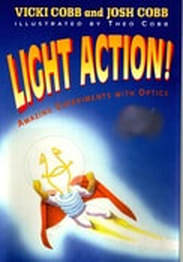 Want to know more about optics? Have a look at Vicki Cobb's book Light Action! She co-authored it with her son, Josh, who is an optical engineer and her other son, Theo, drew the pictures. It's full of experiments that let you use optics to: -Bend light around corners - Stop time with a pair of sunglasses - Capture light on a silver tray - Magnify pictures with an ice cube - Pour light into your palm - Project a big-screen image from your small TV - Fool a doorbell with a bike reflector! For more information, go here. Vicki is a member of iNK's Authors on Call and is available for classroom programs through Field Trip Zoom, a terrific technology that requires only a computer, wifi, and a webcam. Click here to find out more. MLA 8 Citation
Cobb, Vicki. "What Can You Learn from a Holiday Light and a Glass Cup?" Nonfiction Minute, iNK Think Tank, 14 Dec. 2017, www.nonfictionminute.org/ What-Can-You-Learn-from-a-Holiday-Light-and-a-Glass-Cup.
1 Comment
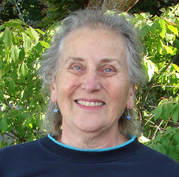 How often do you check your cell phone or email each day? Use Twitter or Facebook? Can you stand not to “stay in touch” for even one day? We’re used to being able to hear from people anywhere in the world at any time, with just a few taps on a keyboard or telephone pad. Through most of human history people could only communicate when they were within shouting distance. When alphabets came along, our ancestors could create messages on stone or wood and later on parchment (made from animal skin), or paper, made from wood pulp. Then, of course, the message had to get from one person to another by way of a messenger. When public mail came along, it made that process much easier and more reliable. That’s where things stood for a long time. Imagine being a soldier in 1804 joining explorers Meriwether Lewis and William Clark on their epic trek across the west to the Pacific Coast. This was territory almost totally unknown at the time to European Americans. You’ve left behind your family and all your friends. Now you have no way of finding out what happened to those dear to you. Did your father or mother die? Did a sister get married? How many babies were born? Your loved ones get to be a bit luckier, since in the spring of 1805, the keel boat that carried the expedition to Indian villages for the winter is sent back down the Missouri River with a small crew, and you get a chance to write notes to your loved ones, reassuring them that you are okay. A lot can happen during a 2½ year span like the one endured by members of the expedition! Finally, in September of 1806, you and your colleagues return to the St. Louis area and find out that most people assumed you were all dead. Now you must figure out as quickly as possible how to reconnect with family and friends. It won’t be easy, since they don’t know you are alive, and you don’t know where they are after so long. How can you even locate everyone you care about? Think about it: If you didn’t have email or a phone of any kind, whose messages would you miss the most? And who would you most wish you could tell about these events in your life?  Dorothy has written about how the horse changed the lives of the Plains Indians and everything that followed. Dorothy Hinshaw Patent is a member of iNK's Authors on Call and is available for classroom programs through Field Trip Zoom,a terrific technology that requires only a computer, wifi, and a webcam. Click here to find out more. MLA 8 Citation Patent, Dorothy Hinshaw. "Keeping in Touch." Nonfiction Minute, iNK Think Tank, 4 Oct. 2017, www.nonfictionminute.org/the-nonfiction-minute/keeping-in-touch. 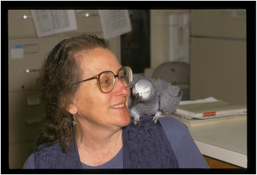 The question “how smart are animals?” has puzzled many people for generations. Scientist Irene Pepperberg became intrigued with this problem after viewing NOVA TV programs about communication studies in apes and dolphins. Trained as a chemist, Irene decided then and there that her true passion was actually animal intelligence, not chemistry. Irene plunged into learning what was already known and the revolutionary ideas of scientists who were changing how people thought about animals. At that time, in the early 1970s, people thought that animals didn’t think and make decisions but merely responded moment by moment to their environments. But researchers working with apes and dolphins were overturning that concept and showing that indeed, animals could think, solve problems, and act intelligently about what they had learned. What about birds, Irene wondered? She had kept pet parakeets and knew they were smart and could learn to speak at least a few words. . She decided to study an African Grey parrot, a popular pet that can learn to pronounce words especially well. She bought a young parrot, named him Alex, and got to work. To probe Alex’s mind, Irene needed to teach him to use words to describe his world. This took long, patient training. After a few years Alex could name objects and foods, such as a key, a piece of wood, or a banana. He also learned several colors, and soon could label an object by both its label and color, such as identifying “green key” or “yellow corn.” He learned to distinguish whether an object was made of wood, paper, or rawhide, and could distinguish shapes such as “three-cornered” or “four-corner.” Alex also used his vocabulary to express his own desires. In the middle of an experimental session he might say “Want nut,” or “Wanna go shoulder.” As the years passed, Alex kept learning. If Irene presented him with a tray of items of different numbers and colors—say 2 green keys, 4 blue keys, and 6 red keys—he could correctly answer the question “What color four?” By the time he died suddenly and unexpectedly in 2007, Alex had learned more than 100 labels and showed understanding of many concepts. When people asked Irene why Alex was special, she’d reply, “Because a bird with a brain the size of a shelled walnut could do the kinds of things that young children do. And that changed our perception of what we mean by ‘bird brain.’ It changed the way we think about animal thinking.” 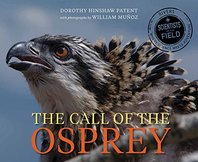 Alex isn't the only bird Dorothy has written about. This book explores a University of Montana research project using blood samples from osprey chicks to investigate the effects of heavy metal refuse from mining on the ecology of the Clark Fork River. To learn more about The Call of the Osprey, go here. Dorothy Hinshaw Patent is a member of iNK's Authors on Call and is available for classroom programs through Field Trip Zoom, a terrific technology that requires only a computer, wifi, and a webcam. Click here to find out more. MLA 8 Citation
Patent, Dorothy Hinshaw. "Alex the Parrot, a Real Bird Brain." Nonfiction Minute, iNK Think Tank, 15 May 2018, www.nonfictionminute.org/ the-nonfiction-minute/Alex-the-Parrot-a-Real-Bird-Brain. 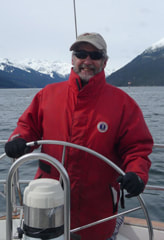 Nearly everyone is familiar with Thomas Edison, born [February 11] day in 1847. When Thomas started school, his teacher called him “addled,” and he soon dropped out. His mother home-schooled him for several years. He began his entrepreneurial career when he was 12, publishing his own newspaper and selling it on the train. A few years later, he became a telegrapher and started tinkering in his spare time. He made many improvements to telegraphy and eventually turned to inventing full-time in his New Jersey workshop. He was amazingly persistent. He explained that “Genius is 1 percent inspiration and 99 percent perspiration,” “Opportunity is missed by most people because it is dressed in overalls and looks like work,” and “I haven’t failed. I’ve just found 10,000 ways that won’t work.” As a result of his persistence, he received more than 2,000 patents worldwide. These patents included the incandescent light bulb, the phonograph, and the movie camera. He became one of the most famous Americans of his era. When he died in 1931, light bulbs around the world were briefly dimmed or turned off. There’s another, lesser-known side of Edison however. He was a ruthless businessman. One of the most notable examples involved the movie camera. Soon after inventing it, he established a company called Edison Studios in New Jersey. The building was set on rollers to follow the sun’s path across the sky. In 1894, his 5-second film “Fred Ott’s Sneeze” became the first-ever copyrighted motion picture. Audiences loved this new technology and flocked to theatres. To meet the demand, many other small moviemaking companies sprang up. Edison hated the competition. In 1898, he began filing lawsuits to force them out of business. When that didn’t work, he organized the Motion Picture Patents Company, a group of 10 film companies headed by Edison Studios. The Patents Company continued the court battles. Presumably with Edison’s approval, it sometimes hired thugs who broke into rival studios and ransacked them. Not surprisingly, many of Edison’s victims wanted to get as far away as they could. They headed for southern California, on the other side of the country. Side benefits were generally better weather that allowed year-round filming, a variety of terrain features, and cheap land and labor. Many of the newcomers established their offices in a tiny village near Los Angeles called Hollywood—the name now synonymous with the movie industry. 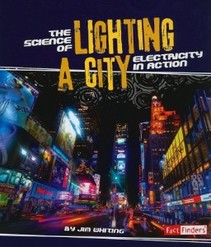 Click! The lights come on, and it seems like the most natural thing in the world. But without science, you’d be left in the dark. Jim Whiting's The Science of Lighting a City takes a closer look at the amazing places that Edison's invention of the light bulb has led. Whiting, Jim. "Thomas Edison: Cutthroat Businessman." Nonfiction Minute, iNK
Think Tank, 21 May 2018, www.nonfictionminute.org/the-nonfiction-minute/ Thomas-Edison-Cutthroat-Businessman. 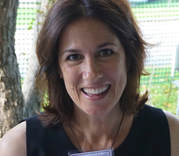 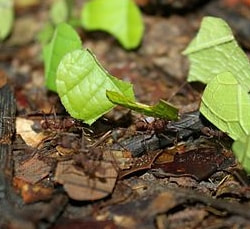 Imagine you’re driving home from your favorite take-out restaurant when you suddenly encounter a giant boulder in the middle of the road. With luck, the person at the wheel has time to slam on the brakes and then drive around it. Scientists are refining a technology that helps cars avoid collisions and traffic jams. Cars will be programmed to “see” a roadblock or sudden slowdown before the driver does. And some of this technology is based on . . . ants. Leafcutter ants, to be specific. Leafcutters can be any of a number of species of ants equipped with powerful mandibles (jaws). They travel in long lines through the rainforest, leaving a scent along the trail to find their way back. After an ant saws a chunk out of a leaf, it flings it over its back and then joins the super-highway of nest-mates heading back to the nest. Once there, the ant’s colleagues chew the vegetation into a pulp and then mix it with ant poop and fungus spores. The ants eat the resulting fungus that grows from the decomposed goop. According to a study in the Journal of Experimental Biology, scientists blocked the path and created a narrow passageway between leafcutter ants and their nest, to see what the ants would do. Not only did the ants at the front show the ants behind them an efficient route back to the nest, but the chain of ants also somehow communicated, ant by ant, the need to carry a smaller piece of leaf to fit through the narrower passage the scientists had created. And none of them bumped into anything, even while lugging leaves ten times their body weight. By working together and adapting quickly, the ants communicated information and reinforced the trail using what scientists call “distributed intelligence.” And ants don’t just help car engineers. Scientists in other fields have been studying ant traffic patterns for all sorts of different systems where massive amounts of interacting units have to move around without crashing into one another. Besides traffic jams, scientists are studying ways to apply ant-like ingenuity to fields of study such as molecular biology and telecommunications. 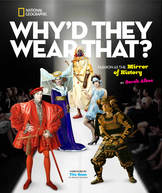 Sara Albee's book, Why'd They Wear That?, was published by National Geographic in 2015. Get ready to chuckle your way through centuries of fashion dos and don'ts! In this humorous and approachable narrative, you will learn about outrageous, politically-perilous, funky, disgusting, regrettable, and life-threatening creations people actually wore in public. MLA 8 Citation
Albee, Sarah. "Ants in a Jam." Nonfiction Minute, iNK Think Tank, 4 Dec. 2017, www.nonfictionminute.org/ Ants-in-a-Jam. |
*NEWS
|
For Vicki Cobb's BLOG (nonfiction book reviews, info on education, more), click here: Vicki's Blog
The NCSS-CBC Notable Social Studies Committee is pleased to inform you
that 30 People Who Changed the World has been selected for Notable Social Studies Trade Books for Young People 2018, a cooperative project of the National Council for the Social Studies (NCSS) & the Children’s Book Council
Categories
All
Abolitionists
Adams Janus
Adaptation
Adaptations
Adkins Jan
Advertising
Aerodynamics
Africa
African American History
African Americans
Africa West
Agriculture
Aircraft
Air Pilots
Air Pressure
Air Travel
Albee Sarah
Alchemy
Alligators
Allusion
American History
American Icons
Amphibians
Amundsen Roald
Anatomy
Ancient
Ancient Cultures
Anderson Marian 1897-1993
Animal Behavior
Animal Experimentation
Animal Intelligence
Animals
Animation
Antarctica
Ants
Apache Indians
Apes
April Fool's Day
Architecture
Argument
Arithmetic
Art
Art Deco
Artists
Arts
Asia
Astronauts
Astronomy
Athletes
Atomic Theory
Audubon Societies
Authors
Autobiography
Automobiles
Aviation
Awards
Bacteria
Baseball
Battuta Ibn
Bears
Beatles
Beavers
Bees
Biodegradation
Biography
Biology
Biomes
Biomimicry
Biplanes
Birds
Black Death
Black History
Blindness
Blizzards
Bombs
Bonaparte Napoleon
Boone Daniel
Botany
Brazil
Bridges
Brill Marlene Targ
Brooklyn Bridge
Brown John
Buffaloes
Building Materials
Butterflies
Caesar
Caesar Julius
Caissons
Calculus
Calendars
Cannibal
Capitals
Caravaggio
Carbon Dioxide
Carnivores
Carson Mary Kay
Cartoons & Comics
Carving (Decorative Arts)
Cascade Range
Castaldo Nancy
Castles
Castrovilla Selene
Cathedrals
Cats
Caves
Celts
Cemeteries
Chemistry
Children's Authors
Child Welfare
China
Choctaw Indians
Christmas
Chronometers
Cicadas
Cinco De Mayo
Ciphers
Circle
Citizenship
Civil Rights
Civil Rights Movements
Civil War
Civil War - US
Climate
Climate Change
Clocks And Watches
Clouds
Cobb Vicki
COBOL (Computer Language)
Code And Cipher Stories
Collard III Sneed B.
Collectors And Collecting
Color
Commerce
Communication
Competition
Compilers
Composers
Computers
Congressional Gold Medal
Consitution
Contests
Contraltos
Coolidge Calvin
Cooling
Corms
Corn
Counterfeiters
Covid-19
Crocodiles
Cryptography
Culture
Darwin Charles
Declaration Of Independence
Decomposition
Decompression Sickness
Deep-sea Animals
Deer
De Medici Catherine
Design
Detectives
Dickens Charles
Disasters
Discrimination
Diseases
Disney Walt
DNA
Dogs
Dollar
Dolphins
Douglass Frederick 1818-1895
Droughts
Dr. Suess
Dunphy Madeleine
Ear
Earth
Earthquakes
Ecology
Economics
Ecosystem
Edison Thomas A
Education
Egypt
Eiffel-gustave-18321923
Eiffel-tower
Einstein-albert
Elephants
Elk
Emancipationproclamation
Endangered Species
Endangered-species
Energy
Engineering
England
Englishlanguage-arts
Entomology
Environmental-protection
Environmental-science
Equinox
Erie-canal
Etymology
Europe
European-history
Evolution
Experiments
Explorers
Explosions
Exports
Extinction
Extinction-biology
Eye
Fairs
Fawkes-guy
Federalgovernment
Film
Fires
Fishes
Flight
Floods
Flowers
Flute
Food
Food-chains
Foodpreservation
Foodsupply
Food-supply
Football
Forceandenergy
Force-and-energy
Forensicscienceandmedicine
Forensic Science And Medicine
Fossils
Foundlings
France
Francoprussian-war
Freedom
Freedomofspeech
French-revolution
Friction
Frogs
Frontier
Frontier-and-pioneer-life
Frozenfoods
Fugitiveslaves
Fultonrobert
Galapagos-islands
Galleys
Gametheory
Gaudi-antoni-18521926
Gender
Generals
Genes
Genetics
Geography
Geology
Geometry
Geysers
Ghosts
Giraffe
Glaciers
Glaucoma
Gliders-aeronautics
Global-warming
Gods-goddesses
Gold-mines-and-mining
Government
Grant-ulysses-s
Grasshoppers
Gravity
Great-britain
Great-depression
Greece
Greek-letters
Greenberg Jan
Hair
Halloween
Handel-george-frederic
Harness Cheryl
Harrison-john-16931776
Health-wellness
Hearing
Hearing-aids
Hearst-william-randolph
Henry-iv-king-of-england
Herbivores
Hip Hop
History
History-19th-century
History-france
History-world
Hitler-adolph
Hoaxes
Holidays
Hollihan Kerrie Logan
Homestead-law
Hopper-grace
Horses
Hot Air Balloons
Hot-air-balloons
Housing
Huguenots
Human Body
Hurricanes
Ice
Icebergs
Illustration
Imagery
Imhotep
Imperialism
Indian-code-talkers
Indonesia
Industrialization
Industrial-revolution
Inquisition
Insects
Insulation
Intelligence
Interstatecommerce
Interviewing
Inventions
Inventors
Irrational-numbers
Irrigation
Islands
Jacksonandrew
Jazz
Jeffersonthomas
Jefferson-thomas
Jemisonmae
Jenkins-steve
Jet-stream
Johnsonlyndonb
Jokes
Journalism
Keeling-charles-d
Kennedyjohnf
Kenya
Kidnapping
Kingmartinlutherjr19291968
Kingmartinlutherjr19291968d6528702d6
Kings-and-rulers
Kings Queens
Kings-queens
Koala
Labor
Labor Policy
Lafayette Marie Joseph Paul Yves Roch Gilbert Du Motier Marquis De 17571834
Landscapes
Languages-and-culture
Law-enforcement
Layfayette
Levers
Levinson Cynthia
Lewis And Clark Expedition (1804-1806)
Lewis Edmonia
Liberty
Lift (Aerodynamics)
Light
Lindbergh Charles
Liszt Franz
Literary Devices
Literature
Lizards
Longitude
Louis XIV King Of France
Lumber
Lunar Calendar
Lynching
Macaws
Madison-dolley
Madison-james
Madison-james
Mammals
Maneta-norman
Maneta-norman
Marathon-greece
Marine-biology
Marine-biology
Marines
Marsupials
Martial-arts
Marx-trish
Mass
Massachusetts-maritime-academy
Mass-media
Mastodons
Mathematics
May-day
Mcclafferty-carla-killough
Mcclafferty-carla-killough
Mckinley-william
Measurement
Mechanics
Media-literacy
Media-literacy
Medicine
Memoir
Memorial-day
Metaphor
Meteorology
Mexico
Mickey-mouse
Microscopy
Middle-west
Migration
Military
Miners
Mississippi
Molasses
Monarchy
Monsters
Montgomery
Montgomery-bus-boycott-19551956
Montgomery-heather-l
Monuments
Moon
Moran-thomas
Morsecode
Morsesamuel
Moss-marissa
Moss-marissa
Motion
Motion-pictures
Mummies
Munro-roxie
Munro-roxie
Musclestrength
Museums
Music
Muslims
Mythologygreek
Nanofibers
Nanotechnology
Nathan-amy
Nathan-amy
Nationalfootballleague
Nationalparksandreserves
Nativeamericans
Native-americans
Native-americans
Naturalhistory
Naturalists
Nature
Nauticalcharts
Nauticalinstruments
Navajoindians
Navigation
Navy
Ncaafootball
Nervoussystem
Newdeal19331939
Newman-aline
Newman-aline
Newton-isaac
New-york-city
Nobelprizewinners
Nomads
Nonfictionnarrative
Nutrition
Nylon
Nymphs-insects
Oaths Of Office
Occupations
Ocean
Ocean-liners
Olympics
Omnivores
Optics
Origami
Origin
Orphans
Ottomanempire
Painters
Painting
Paleontology
Pandemic
Paper-airplanes
Parksrosa19132005
Parrots
Passiveresistance
Patent Dorothy Hinshaw
Peerreview
Penguins
Persistence
Personalnarrative
Personification
Pets
Photography
Physics
Pi
Pigeons
Pilots
Pinkertonallan
Pirates
Plague
Plains
Plainsindians
Planets
Plantbreeding
Plants
Plastics
Poaching
Poetry
Poisons
Poland
Police
Political-parties
Pollen
Pollution
Polo-marco
Populism
Portraits
Predation
Predators
Presidentialmedaloffreedom
Presidents
Prey
Prey-predators
Prey-predators
Prime-meridian
Pringle Laurence
Prohibition
Proteins
Protestandsocialmovements
Protestants
Protestsongs
Punishment
Pyramids
Questioning
Radio
Railroad
Rainforests
Rappaport-doreen
Ratio
Reading
Realism
Recipes
Recycling
Refrigerators
Reich-susanna
Religion
Renaissance
Reproduction
Reptiles
Reservoirs
Rheumatoidarthritis
Rhythm-and-blues-music
Rice
Rivers
Roaringtwenties
Roosevelteleanor
Rooseveltfranklind
Roosevelt-franklin-d
Roosevelt-theodore
Running
Russia
Safety
Sanitation
Schwartz David M
Science
Scientificmethod
Scientists
Scottrobert
Sculpture
Sculpturegardens
Sea-level
Seals
Seals-animals
Secretariesofstate
Secretservice
Seeds
Segregation
Segregationineducation
Sensessensation
September11terroristattacks2001
Seuss
Sextant
Shackletonernest
Shawneeindians
Ships
Shortstories
Silkworms
Simple-machines
Singers
Siy Alexandra
Slavery
Smuggling
Snakes
Socialchange
Social-change
Socialjustice
Social-justice
Socialstudies
Social-studies
Social-studies
Sodhouses
Solarsystem
Sound
Southeast-asia
Soybean
Space Travelers
Spain
Speech
Speed
Spiders
Spies
Spiritualssongs
Sports
Sports-history
Sports-science
Spring
Squirrels
Statue-of-liberty
STEM
Storms
Strategy
Sugar
Sumatra
Summer
Superbowl
Surgery
Survival
Swanson-jennifer
Swinburne Stephen R.
Synthetic-drugs
Taiwan
Tardigrada
Tasmania
Tasmanian Devil
Tasmanian-devil
Technology
Tecumsehshawneechief
Telegraph-wireless
Temperature
Tennis
Terrorism
Thomas Peggy
Thompson Laurie Ann
Time
Titanic
Tombs
Tortoises
Towle Sarah
Transcontinental-flights
Transportation
Travel
Trees
Trung Sisters Rebellion
Tundra
Turnips
Turtles
Typhoons
Underground Railroad
Us-environmental-protection-agency
Us History
Us-history
Ushistoryrevolution
Us History Revolution
Us-history-war-of-1812
Us Presidents
Ussupremecourtlandmarkcases
Vacations
Vaccines
Vangoghvincent
Vegetables
Venom
Vietnam
Viruses
Visual-literacy
Volcanoes
Voting-rghts
War
Warne-kate
Warren Andrea
Washington-dc
Washington George
Water
Water-currents
Wax-figures
Weapons
Weather
Weatherford Carole Boston
Whiting Jim
Wildfires
Winds
Windsor-castle
Wolves
Woman In History
Women
Women Airforce Service Pilots
Women-airforce-service-pilots
Womeninhistory
Women In History
Women-in-science
Women's History
Womens-roles-through-history
Wonder
Woodson-carter-godwin-18751950
World-war-i
World War Ii
World-war-ii
Wright Brothers
Writing
Writing-skills
Wwi
Xrays
Yellowstone-national-park
Zaunders Bo
ArchivesMarch 2021
February 2021
January 2021
December 2020
November 2020
October 2020
September 2020
June 2020
May 2020
April 2020
March 2020
February 2020
January 2020
December 2019
October 2019
September 2019
August 2019
July 2019
May 2019
April 2019
March 2019
February 2019
January 2019
December 2018
November 2018
September 2018
June 2018
May 2018
April 2018
March 2018
February 2018
January 2018
December 2017
November 2017
October 2017
September 2017
March 2017
The NONFICTION MINUTE, Authors on Call, and. the iNK Books & Media Store are divisions of iNK THINK TANK INC.
a 501 (c) (3) nonprofit corporation. To return to the iNK Think Tank landing page click the icon or the link below. :
http://inkthinktank.org/
For more information or support, contact thoughts@inkthinktank.org
For Privacy Policy, go to
Privacy Policy
© COPYRIGHT the Nonfiction Minute 2020.
ALL RIGHTS RESERVED.
This site uses cookies to personalize your experience, analyze site usage, and offer tailored promotions. www.youronlinechoices.eu
Remind me later
Archives
March 2023
February 2023
January 2023
December 2022
November 2022
October 2022
September 2022
June 2022
May 2022
April 2022
March 2022
February 2022
January 2022
December 2021
November 2021
September 2021
April 2021
March 2021
February 2021
November 2020
October 2020
September 2020
June 2020
May 2020
April 2020
March 2020
February 2020
January 2020
October 2019
August 2019
July 2019
May 2019
April 2019
December 2018
September 2018
June 2018
May 2018
March 2018
February 2018
January 2018
December 2017
November 2017
October 2017
September 2017





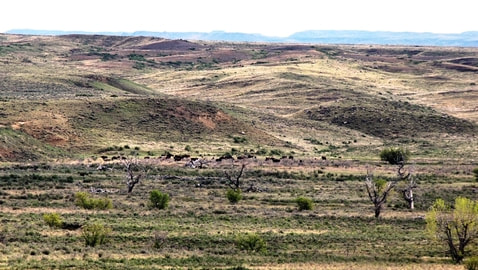
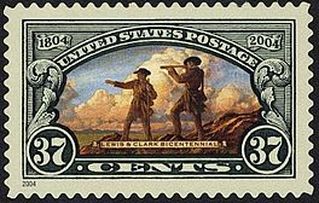


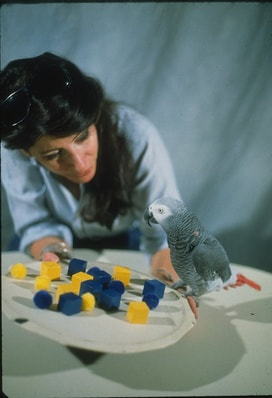
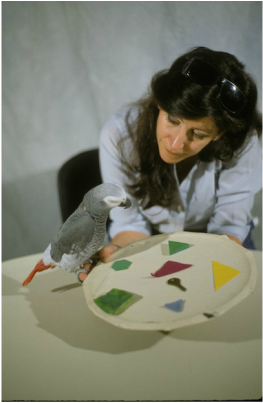
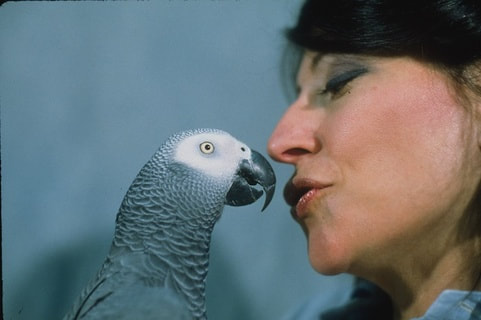


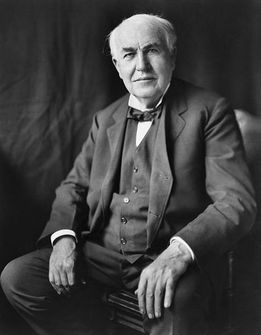
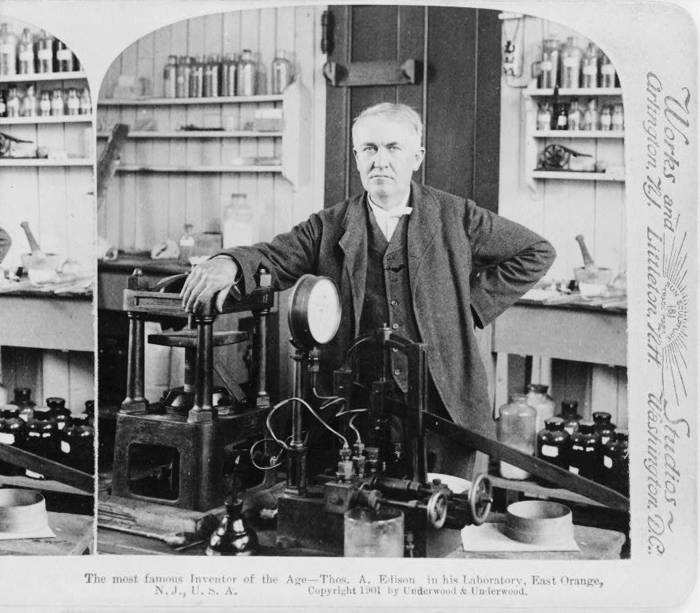



 RSS Feed
RSS Feed
